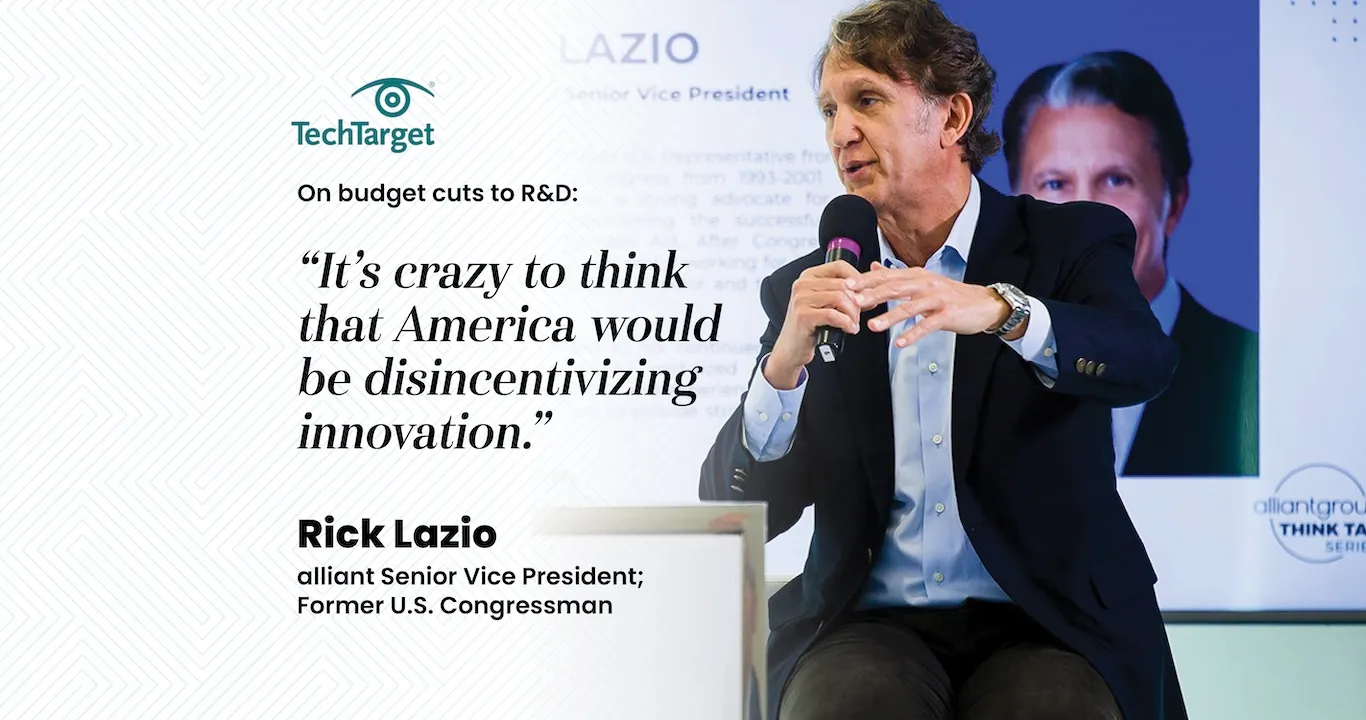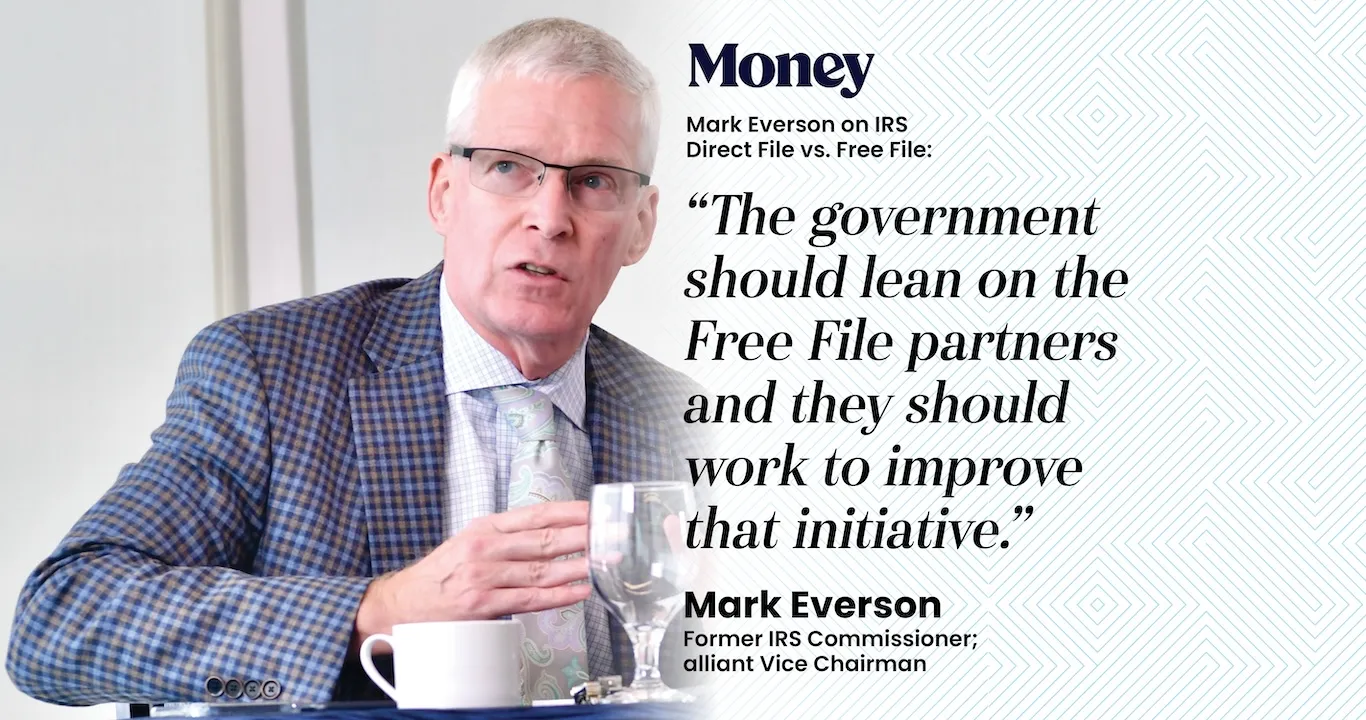PUBLISHED IN

Byline from Kathy Petronchak, Director
of IRS Practice & Procedure at
alliantgroup,
Donald Sniezek,
Senior Technical Advisor
at alliantgroup,
Darren Guillot, Former IRS Commissioner of the Small Business/Self Employed Division; alliantgroup National Director, and Matthew Beddingfield, Senior Associate
at Zerbe, Miller, Fingeret, Frank &
Jadav LLP
If you have any questions about this article, please send us a message.

Although a few of the MSPs have been discussed above, other problem areas made the NTA’s list, including return preparer oversight, identity theft, online account access for taxpayers and tax professionals, and international information return penalties. All of these are key areas for tax practitioners.
While the staffing was made available to reach this 85 percent LOS, this resulted in CSRs being idle 34 percent of the time and contributing to the backlog of Forms 1040-X being processed. The Annual Report further noted that “although the IRS improved telephone service throughout FY 2023 compared to FY 2022, CSR LOS declined after the filing season once the IRS reallocated resources, averaging only 51 percent over FY 2023. The IRS deserves credit for the improvement in phone service, but its reported metrics can be misleading. When the IRS reports an 85 percent CSR LOS, it does not mean that 85 percent of taxpayers who called one of the IRS’ 102 phones lines received assistance and does not reflect how many callers were satisfied with their experience.”
The last MSP to be highlighted is that of IRS Independent Office of Appeals (Appeals) Independence. The perceived lack of independence and operational efficiency in the Appeals process undermines taxpayer trust and prolongs dispute resolution. The Annual Report notes that 74 percent of taxpayers trust the IRS to fairly enforce the tax laws. An important part of this process is access to Appeals.
The NTA noted concerns about Appeals that include:
■ Not all Appeals decisions are autonomous and transparent,
■ the perception exists that Chief Counsel attorneys attend Appeals conferences to develop issues for trial,
■ a compliance culture lives within the Appeals organization, and
■ Appeals needs to do additional work to ensure its independence.
Recent data and observations indicate that Appeals Officers (“AOs”) often lack autonomy in making settlement decisions based on the hazards of litigation. This is contrary to the intended role of AOs to independently assess the hazards of litigation and guide the settlement process. This perceived lack of autonomy undermines the integrity of the Appeals process and erodes taxpayer confidence in the system.
Appeals also employs specialists, such as subject matter experts and technical guidance coordinators, who often work behind the scenes on coordinated issues. These specialists often approach cases differently than AOs and are not as accessible to taxpayers as an AO. While AOs aim to resolve cases based on a taxpayer’s unique facts and circumstances, their settlement authority can be limited on cases involving Appeals specialists and coordinated issues.
Appeals specialists often inform AOs and taxpayers that they cannot approve a settlement that deviates from undisclosed, nationwide settlement parameters for a coordinated issue or industry. Taxpayers cannot meaningfully engage in a discussion on case resolution if Appeals makes the decision based on undisclosed settlement standards to which taxpayers are not privy. Many times, taxpayers do not communicate with the decision-maker or do not have access to the decision-maker since a “wizard behind the curtain” exists who is making decisions.
At the conclusion of each Appeals case, the AO must draft an Appeals Case Memorandum (“ACM”) or its equivalent that explains the rationale for the settlement decision. Appeals provides that ACM to the examination division. Independence should require that Appeals share the ACM with the taxpayer at the same time.
While AOs are supposed to verbally discuss the rationale for a decision with a taxpayer, these discussions do not always include the same analysis of the hazards of litigation as determined by the AO in the ACM. Taxpayers should not see AOs as being in close association with the IRS function that raised the issue. The NTA recommends that Appeals revise the Internal Revenue Manual, requiring Appeals to share a copy with the taxpayer at the close of every case to protect a taxpayer’s right to be informed about the rationale behind an Appeals decision.
Conclusion
Although a few of the MSPs have been discussed above, other problem areas made the NTA’s list, including return preparer oversight, identity theft, online account access for taxpayers and tax professionals, and international information return penalties. All of these are key areas for tax practitioners.
ERC VDP may be closed to new applicants by the time this is published. For those who did not enter VDP because they could not pay or withdraw, there may be other considerations to be made in the future. And to compound that decision, the proposed legislation impacting the statute of limitations and other sanctions may come to fruition.
Featured Leadership

Kathy Petronchak is the Director of IRS Practices and Procedure at alliantgroup and is part of the alliantnational group in Washington, DC. In this role, she serves as an invaluable resource on a wide range of issues related to IRS procedures, such as foreign bank account reporting, alternative dispute resolution; statute of limitations; account problems, collection issues, and penalty issues. She is currently the Chair of the AICPA IRS Advocacy & Relations Committee and has served on various committees the past 11 years.

Darren Guillot recently retired from IRS after 36 years with the agency. His roles included serving as Commissioner of the IRS’ Small Business/Self Employed Division, overseeing all IRS domestic and international Collection Operations and its Operations Support functions. In his role as Commissioner, SBSE (2021 – 2022) he led IRS’ groundbreaking, successful effort using authenticated voice robotics, eliminating phone hold times for over 14 million taxpayers in less than two years. He also led the creation and oversight of IRS’ Fraud Enforcement Office, providing support and coordination for all IRS efforts in detecting and deterring tax fraud – including leading the most expansive and innovative use of data and systems analytics to address virtual currency by the civil functions of the IRS.

Donald Sniezek joined alliantgroup from the IRS, where he spent more than 34 years of his career, holding a number of Senior Executive Service positions culminating in appointment as Director of Examination Headquarters for the Small Business and Self-Employed (SBSE) Division. He uses his years of experience at the IRS to assist alliantgroup’s clients as a technical advisor and ambassador for U.S. small and medium sized businesses (SMBs).

Matthew Beddingfield is a Senior Associate in ZMF’s Washington, D.C. office who specializes in representing whistleblowers from their initial filing through any necessary appeals process. He has experience representing clients before several government entities, including the Internal Revenue Service and the U.S. Securities and Exchange Commission, as well as the U.S. Tax Court.
Prior to joining ZMF Law, Matthew was a legal editor at Bloomberg, where he reported on a variety of tax cases and legislative updates.
Matthew graduated from the Duquesne University School of Law, where he was the Editor-in-Chief of Juris, the law school’s primary magazine. During that time he worked for Senior District Judge Nora Barry Fischer of the U.S. District Court for the Western District of Pennsylvania. He holds a B.A. from the Ohio University Scripps School of Journalism.
Featured Leadership

Rick Lazio is a former U.S. Representative from New York serving in Congress from 1993-2001. While there, he became a strong advocate for small businesses by sponsoring the successful Small Business Tax Fairness Act. After Congress, Rick moved to the private sector working for JP Morgan Chase as a Managing Director and then Executive Vice President. Rick is committed to his continued interest and support of small to mid-sized businesses by brokering his insight and experience in the public and private sectors to provide strong incentives for job growth. This interest has extended into his civic and philanthropic work in New York with the Committee for Economic Development and the Association for a Better New York.


